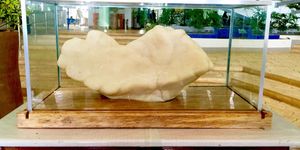This ESA Satellite Has a Fresh New Hole Caused by Space Junk
The European Space Agency’s Copernicus Sentinel-1A satellite has been damaged by a piece of unforeseen space junk, the agency reports.
The space junk, estimated to be no more than a couple millimeters across, struck one of the satellite’s solar array panels. The agency estimates that the hole left in the solar array panel is about 40 centimeters across.
The damage can be seen in the following before/after photographs from an onboard camera.

Image Credit: ESA
The large hole results from such a small piece of space junk because of how fast it’s travelling in space. These micro-meteoroids are traveling at an average of 17,500 miles per hour, relative to the Earth.
The ESA first recognized the problem on August 23rd when a small loss in power production was noticed on the satellite. Nevertheless, the ESA says the satellite is still functioning properly on what power it can produce with the remaining solar panels in the array.
These kinds of impacts aren’t uncommon, so it didn’t come off as much of a surprise to the ESA. Still, it highlights the dangers of space and opens your eyes to how difficult it is to prevent collisions with the various kinds of space junk out there.
“Such hits, caused by particles of millimeter size, are not unexpected,” Holger Krag, the Head of the Space Debris Office at ESA’s establishment in Darmstadt, Germany, said in a statement. “These very small objects are not trackable from the ground, because only objects greater than about 5 cm can usually be tracked and, thus, avoided by maneuvering the satellites.”
It’s usually possible to track space junk and place the satellite into an orbit where it can avoid collisions with them, but in the case of a micrometeoroid only about 1-2 millimeter across, it’s pretty much invisible to us until it hits something.
“In this case, assuming the change in attitude and the orbit of the satellite at impact, the typical speed of such a fragment, plus additional parameters, our first estimates indicate that the size of the particle was of a few millimeters, he continued.”
“Analysis continues to obtain indications on whether the origin of the object was natural or man-made. The pictures of the affected area show a diameter of roughly 40 cm created on the solar array structure, confirming an impact from the back side, as suggested by the satellite’s attitude rate readings.”
We may never know if the space junk that struck the satellite was natural or man-made, but it’s certainly not the first time something has been struck by space junk. Earlier this year, space junk struck the International Space Station’s big Cupola window and left a good-sized chip in it.
Source: ESA








